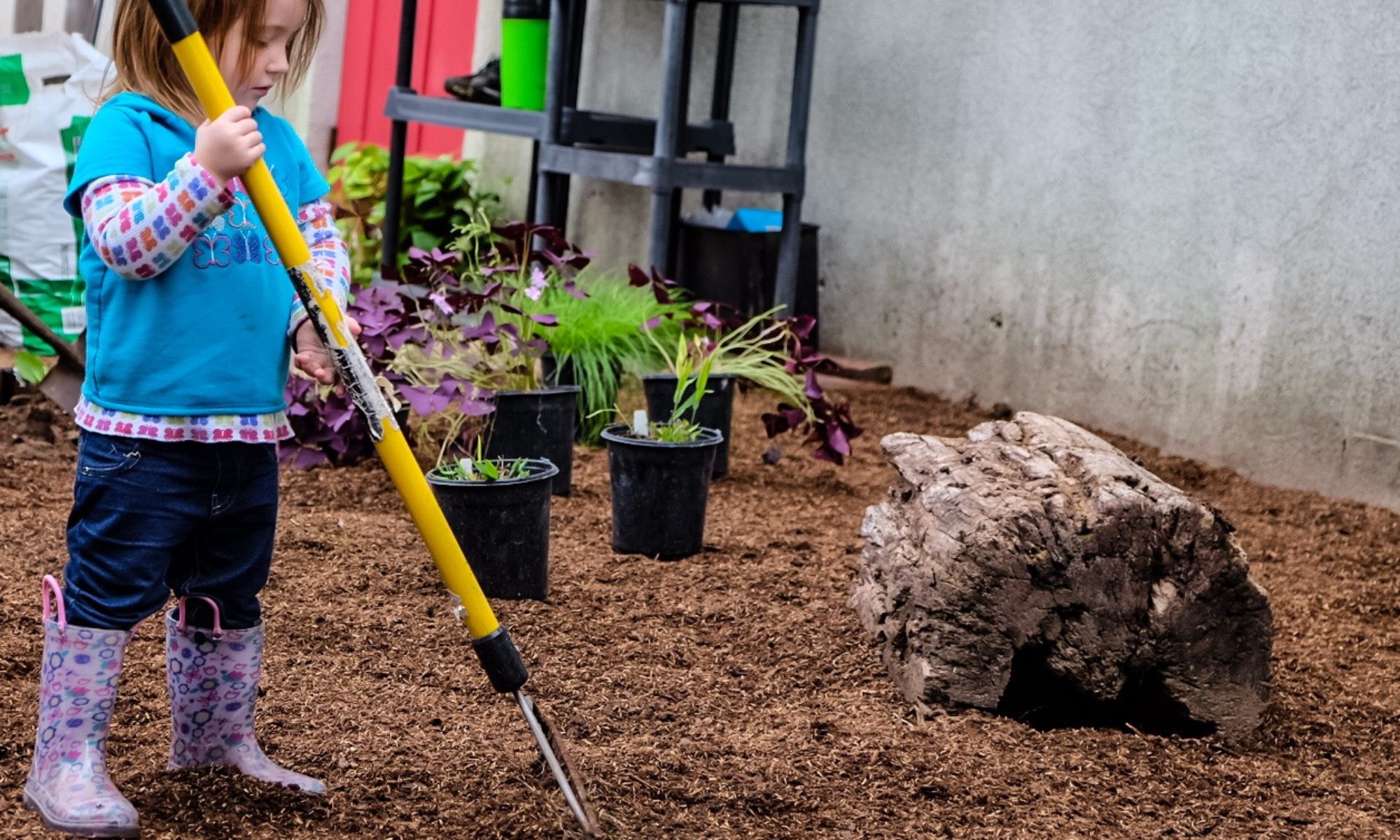Early Childhood (ages 2-6) — Mama Shanah
Winter is the general theme for these littlest of Rose Rockers. In our “Woodsman” Circle, we sing songs while joyfully working to chop, haul, and stack our wood. Last week, it was super cold, and we built a fire, wherein the children experienced the practical but magical experience of gathering, sawing, and stacking wood. Of course, many sang the song as they worked!
Our Story features a dear and resilient duck named Shingebiss, who always manages to find food and keep himself warm no matter how Old Man Winter howls.
Why do we choose to play outdoors when it is cold?
Handwork (Grades 1-3) — Mrs. Ball
We have finished making our knitted bunnies. Many of the students were amazed that we could make a round soft thing from a flat square of knitting. Setting our knitting needles aside we are moving to hand sewing. Our first project is a drawstring project bag made from upcycled tshirts.t-shirts. This project is meaningful work that teaches our children practical life skills as well as to see the potential to give objects a new life.
Main Lesson (Grade 1) — Miss Varasteh
For the past month, 1st Grade has moved from their understanding of numbers from their previous mathematics block of “Quality of Numbers” to the applicable and practical practice of “the Four Processes.” Initially, the class was presented with a story about four characters: Queen Adelaide residing in her queendom; Linus Minus, who gives alms to the poor; Multi of Plier, who plants numerous seeds at a time for a fruitful harvest; and Divya, the chef, who emphasizes fairness in the serving of her dishes. When the idea was presented of combining two queendoms together, Queen Adelaide held up her scepter for the other queen to embrace, thus symbolizing her gesture of “the more the merrier” (and also interestingly, looking an awful lot like a plus sign…) As the 1st Grade heard tales of each character and their moral (and potentially even temperamental) qualities, they then moved into using manipulatives (gems) to practice various scenarios: Queen Adelaide wanting 7 more guests to come to her party of 5; Linus Minus starting out with 12 alms, and giving away 8; Multi of Plier wanting to plant 4 sacks with 3 seeds in each; Divya wanting to serve 12 slices of cake to 6 guests. These types of activities allowed students to practice the various mathematical processes fluidly, fluctuating between one process and another, thus imbuing the sense that mathematics is not fixed but ever-flowing.
Morning circle activities helped promote this, including verses to emphasize addition resulting in even numbers, as well as in odd, and a song about frogs hopping into a pond to emphasize the multiplication of eyes and legs! (2nd and 3rd Grade frogs even came to visit the pond one day!) The math subject class on Tuesdays had the students practicing where numbers are in order (in increments of 10), what numbers are higher or lower than the one at hand, the partnerships of what makes 10 (1 and 9; 2 and 8; etc.). A continuous project in Projects & Excursions is the creation of an official, royal scroll to document all numbers from 1 to 100. Stay tuned to see the 1st Graders’ progress! Meanwhile, throughout the Four Processes block, the students continued to hear stories from the Magical Wonder Tales book, practiced their form drawings, and deepened their exploration of color while painting.









